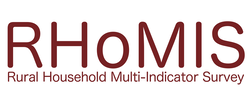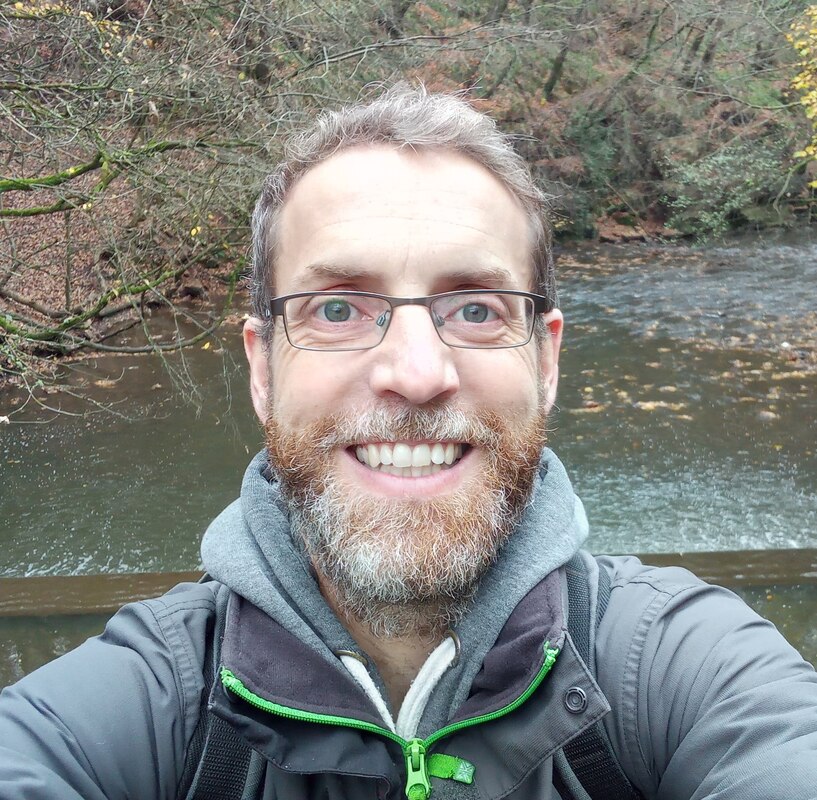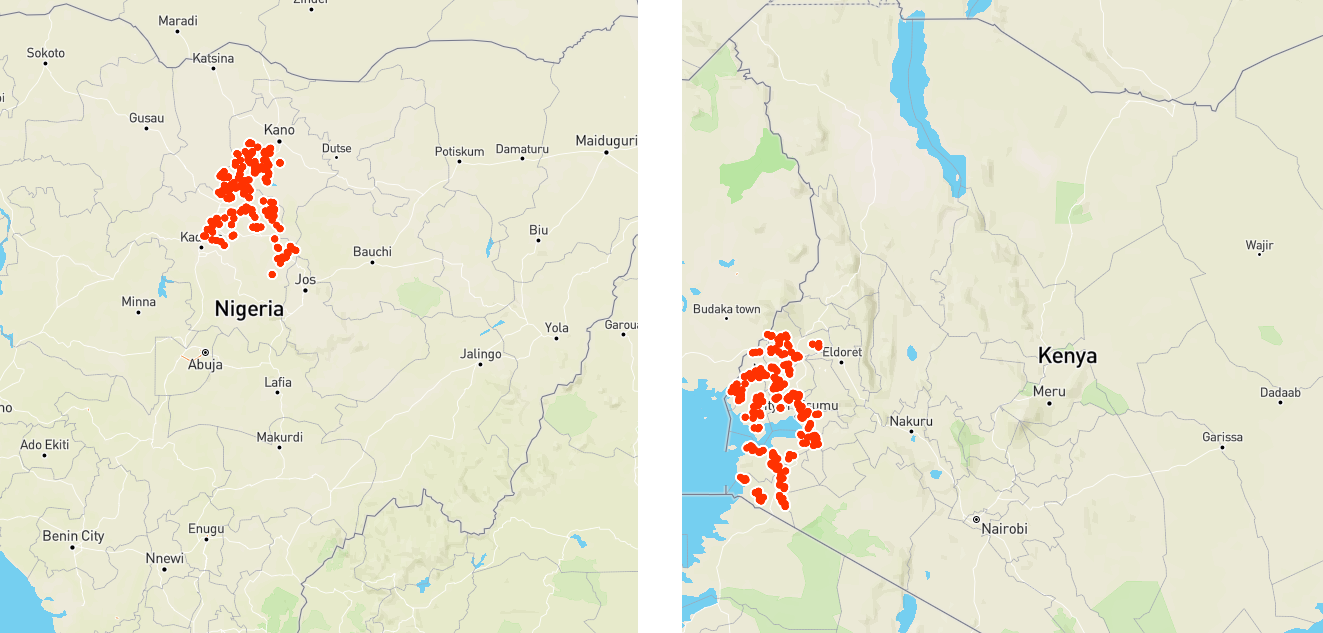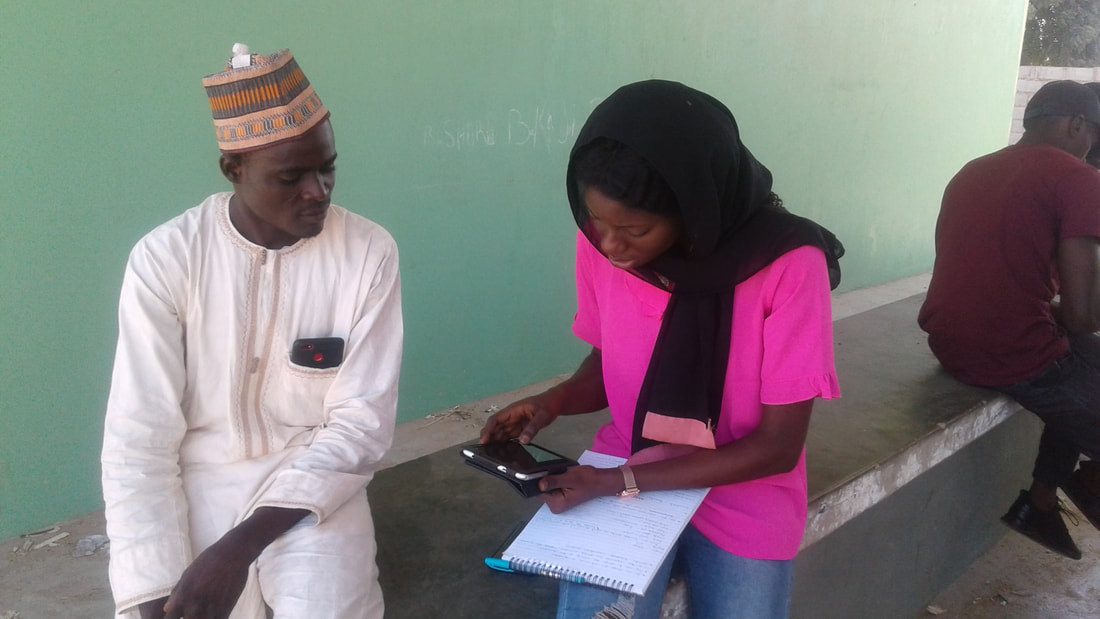|
Editor: Rothamsted Research, together with IITA, used RHoMIS to capture data for the GLTEN project. Interviews were conducted in Nigeria and Kenya in 2019. GLTEN (The Global Long-Term Agricultural Experiment Network) is a network of long-term agricultural experiments spanning five continents and representing numerous climates, environments, crop systems and farming practices. Here we interview some of the team from IITA and Rothamsted. Sam (RHoMIS): Hi Wycliffe, Kamal, and Chloe. Thank you for agreeing to share your experiences about RHoMIS. Could we start with some introductions please? Wycliffe Waswa (IITA): Hi Sam. I am a Research Associate with IITA, based in western Kenya. Kamal Aliyu (IITA): Likewise, I am a Research Associate with IITA, based in Kano, Nigeria. Dr Chloe MacLaren (Rothamsted): Hi Sam, I am a post-doc at Rothamsted Research in England and I am a cropping systems ecologist. Sam: And what were your respective involvements in the RHoMIS surveys? Wycliffe: Kamal and I were responsible for coordination and overseeing the survey implementations. Kamal: We organised training of enumerators and the data collection. There were 559 households interviewed in Nigeria and 574 in Kenya. Chloe: My role was to help customise the survey and support the management of data collection. I am also now leading the data analysis, with support from colleagues at Rothamsted. Sam: Thank you. Can you tell me a bit about why RHoMIS was chosen for data collection? Chloe: We chose RHoMIS because we had heard the system was to easy to you, and we were aware of several publications based on data collected with RHoMIS - so we knew that it was tried and tested. Also, we knew that many datasets had already been collected so there was exciting potential to compare our data with other surveys and infer a larger-scale analysis. Wycliffe: Yes, it was also chosen because it is a digital platform, with distinct advantages. It helps to avoid incorrect data and speeds things up with the automated GPS and digital signature collection. GLTEN interview locations in Kenya and Nigeria respectively Sam: Right. Those are distinct advantages of digital surveys. Did you have any experience of ODK or digital surveys before? Wycliffe: My experience was just with paper-based questionnaires. We regularly had trouble with incorrect data. Kamal: I’ve used ODK extensively in other research projects. We use ODK for our annual surveys with IITA in Nigeria. Using RHoMIS was quite similar to the rest of my experience. Sam: That’s great to hear that you’ve used ODK before Kamal. What did RHoMIS allow you to do that you could not do before? Wycliffe: I believe it provided more accurate data than the paper surveys. And the ability to accurately trace each interview to each enumerator was useful for quality control. The survey worked excellently. The digital format meant that there was less room for enumerators to manipulate the questionnaire. I liked how flexible the survey creation was and the rapid modifications made by the RHoMIS team. Kamal: For me, I liked how the RHoMIS questions are structured and how they are written, particularly the personal questions. These are framed sensitively, and I noticed that helped farmers feel more comfortable. RHoMIS is convenient because it is portable and easy. We don’t have to carry all the papers anymore! It is faster to implement, with (nearly) no typing. The quality control is also convenient, as I could quickly check each questionnaire and track the enumerators before uploading. Sam: Thank you. It is encouraging to hear how RHoMIS made your data collection and quality control easier. Was anything challenging, where we could improve? Chloe: One of the challenges I faced in the survey design was balancing what we needed to know with interview length. This is not unique to RHoMIS, but something common to all interviews. Still, it was a challenge to balance these two things. Wycliffe: Yes, there were a few display challenges when selecting ‘Other’ and entering a text answer. This text entry was not carried into future questions. [Editor: this has been addressed with the latest 1.6 RHoMIS version. Some questions were repetitive, particularly those relating to food security. Also, many of the households are large, with a large number of members. It was time consuming to capture all the demographics.
Sam: Thanks for the feedback. ONA is a great system. Do you have plans for RHoMIS usage in the future?
Wycliffe: Yes. We are very much willing to use RHoMIS again. We showed it to colleagues and representatives from the Ministry of Agriculture in Kenya and other NGOs, who were all impressed. Kamal: With my existing ODK skills, I will continue to use ODK in my unit at IITA. I have promoted ODK and RHoMIS to other survey users and projects. Chloe: I will definitely recommend RHoMIS if there is a future project with similar needs, although there are no new surveys scheduled. The open-source RHoMIS dataset is of great interest and I hope to access that for future work. Sam: That is encouraging to hear. We welcome future collaboration. Chloe, the next question is perhaps more for you and your team analysing the data. I know it is early-on in the process, but I wonder have you gained any new insights so far? Chloe: My preliminary analysis is surprising. I was expecting more obvious patterns to do with farm diversity and location, for example, elevation or proximity to large water bodies. However, the patterns are not so obvious. This means there will be more complex patterns occurring, which is exciting, although means I need to get on with some more complex analysis work. Unfortunately it is too early to say any more than that. Sam: Thank you Chloe. It is great even to hear that much. Perhaps we can talk later when more analysis has been completed. What are the next steps for you? Chloe: Yes, we would be open to sharing more later. We do hope to publish multiple papers as part of the project outputs. But immediate next steps are to plan some follow up interviews with specific farmers. We hope to ask some more detailed questions of the ‘most diverse’ and ‘least diverse’ farmers to understand why their practices differ. Analysis will continue. Before the project wraps up in 2021, we also hope to be able to share the results with all the farmers who took part in their surveys, so they can hear about which practices are most likely to provide reliable food production and incomes in their region. Sam: That sounds great. Is there anything else anyone would like to share in closing? Kamal: No, nothing else from me. You must come and visit us in Kano! Thank you Sam. Wycliffe: It was good to talk to you. Have a good day. Chloe: Thanks Sam. It is good to talk to you and I’m excited to get more into the analysis. It is really obvious that there is enormous potential with the data generated by RHoMIS and digital data collection. Sam: Yes, it is exciting! Thank you all. I wish you all the best with your work and the GLTEN project.
0 Comments
Your comment will be posted after it is approved.
Leave a Reply. |
RHoMIS BlogThe RHoMIS blog is written by a community of practice. The COP is made up of RHoMIS users and creators from across the world. Here we share their stories of how RHoMIS is helping to record and analyse household data. Archives
May 2020
Categories
All
|




 RSS Feed
RSS Feed